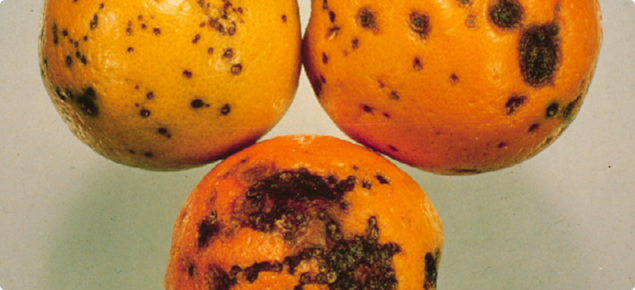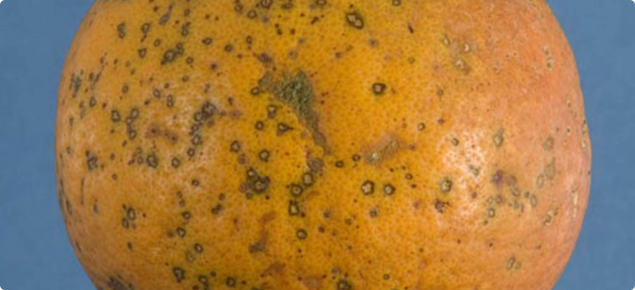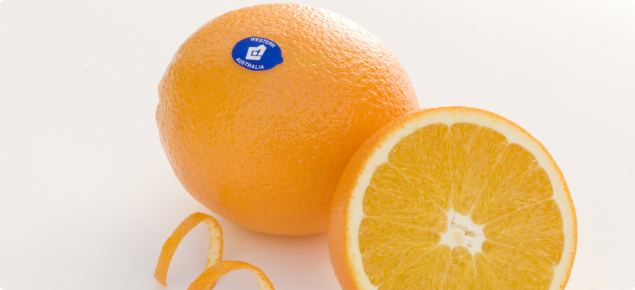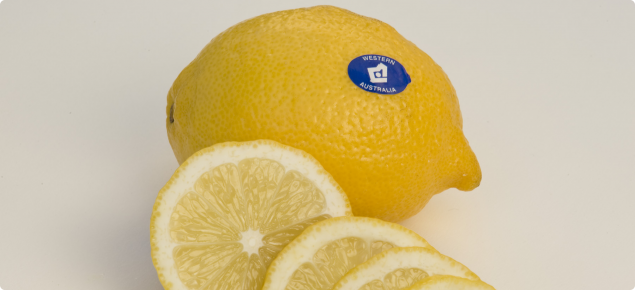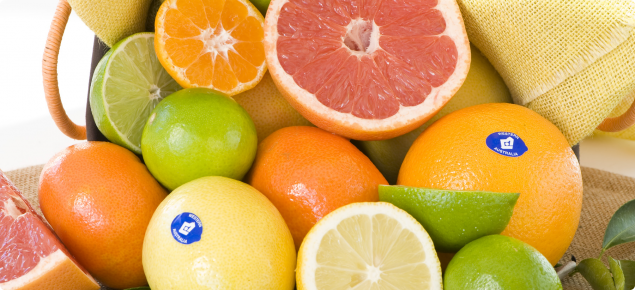Preferred scientific name
Guignardia citricarpa Kiely 1948
Synonyms
Phyllosticta citricarpa (McAlpine) Aa 1973 (asexual stage)
Preferred common name
Citrus black spot
Alternative common name
Black spot
Common host plants
All commercial citrus cultivars are susceptible to Guignardia citricarpa. The orange cultivar Valencia (Citrus sinensis), mandarins (C. reticulata) and lemons (C. limon) are the most susceptible.
Plant part affected
Symptoms can appear on leaves but are predominantly seen on the fruit (Kotzé 2000).
Australian distribution
Queensland (PHA 2001)
New South Wales (PHA 2001)
Northern Territory (PHA 2001)
Status in Western Australia
Guignardia citricarpa Kiely 1948 is considered to be absent from Western Australia and is therefore a quarantine pest. It is a prohibited organism under section 12 of the Biosecurity and Agriculture Management Act 2007.
To confirm the current status please check the Western Australian Organism List. For more information on prohibited organisms please see frequently asked questions about the BAM Act and WAOL.
Biology and ecology
Guignardia citricarpa can infect the fruit and leaves of many Citrus species. The development of symptoms is enhanced by high temperatures, high light intensity, drought and poor vigour (Kotzé 2000). The lesions on fruit do not go beyond the rind, so do not compromise the integrity of the flesh.
Symptoms associated with citrus black spot
- A hard spot is a sunken lesion with black margins and a grey centre. Fruiting bodies that contain fungal spores are produced within the grey centre. These lesions occur prior to harvest on the side of the fruit exposed to sunlight.
- A virulent spot is a spreading sunken necrotic (dead) lesion without defined borders. The colour varies from brown, black to brick red. These lesions usually occur towards the end of the fruit growing season.
- False melanose consists of small, black necrotic lesions that are less than one millimetre in diameter. These symptoms often appear on young green fruit.
- Freckle spot occurs on mature fruit, post harvest, and often while in storage. These spots are round, depressed and reddish-brown with a red to brown border. They range in size from 1–3 mm and are an indication of a heavy infestation.
Leaf spots may occur on the more susceptible species, especially lemon (C. limon). Fruiting bodies are produced on leaves that have fallen and release fungal spores that can then reinfect fruit and leaves. Citrus fruit can be severely infected, while only minor symptoms can occur on leaves (Agostini et al. 2006).
Fungal spores are released over summer with symptoms not seen until autumn or winter.
Control of the disease is dependent on the application of fungicides during periods of infection when fruit and leaves are the most susceptible (Stammler et al. 2013).
Economic consequences
Citrus black spot is an economically important pathogen of citrus as it may make the fruit unmarketable. Infection near the pedicel (stem) of the developing fruit may lead to premature fruit drop (Baayen et al. 2002) reducing production. It can also reduce the quality and grade of fruit.
Presence of the pathogen in Western Australia could potentially limit market access to countries that are free of the disease
What do I do if I find it?
Guignardia citricarpa Kiely 1948 is a prohibited organism for Western Australia. It is important that any suspect infections are reported. Early detection and eradication will help protect the Western Australian citrus industry. Please contact the Pest and Disease Information Service (PaDIS) to report this pest.
References
Agostini JP, Peres NA, Mackenzie SJ, Adaskaveg JE, Timmer LW 2006, Effect of fungicides and storage conditions on postharvest development of citrus black spot and survival of Guignardia citricarpa in fruit tissues. Plant Disease 90,1419–1424.
Baayen RP, Bonants PJM, Verkley G, Carroll GC, van der Aa HA, de Weerdt M, van Brouwershaven IR, Schutte GC, Maccheroni W, Jr., de Blanco CG et al. 2002, Nonpathogenic isolates of the citrus black spot fungus, Guignardia citricarpa, identified as a cosmopolitan endophyte of woody plants, G. mangiferae (Phyllosticta capitalensis). Phytopathology, 92: 464–477.
Kotzé J 2000, 'Black spot', in LW Timmer, SM Garnsey, JH Graham (eds.), Compendium of citrus diseases, 2nd edn. The American Phytopathological Society Press, St Paul, Minnesota, pp. 23–25.
PHA 2001, Australian Plant Pest Database [online database]. Plant Health Australia (PHA). <www.planthealthaustralia.com.au/appd> [2 April 2014].
Stammler G, Schutte GC, Speakman J, Miessner S, Crous PW 2013, Phyllosticta species on citrus: Risk elimination of resistance to QoI fungicides and identification of species with cytochrome b gene sequences. Crop Protection 48, 6–12.

